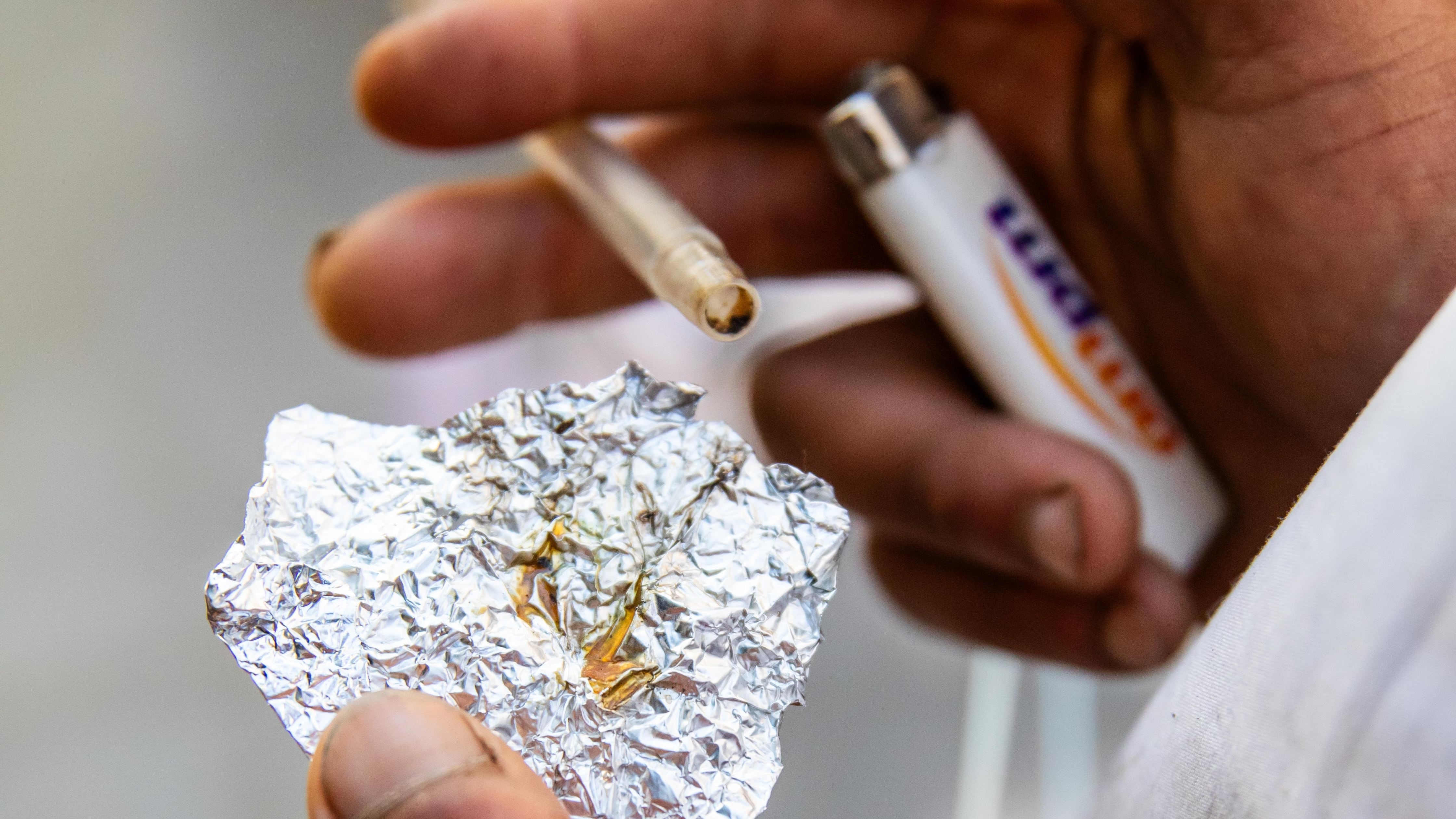It took only 75 hours for Multnomah County Chair Jessica Vega Pederson to order the county to reverse course after WW reported Friday that health officials were set to begin distributing tinfoil and straws to fentanyl smokers.
“Our health department went forward with this proposal without proper implementation protocols,” she told WW on July 10.
It’s still not clear when Pederson learned of the initiative. The county’s top public health official, Jessica Guernsey, briefed the board in May on plans to distribute “smoking supplies,” in an effort to convince drug users to switch to a safer method of consuming opioids like heroin and fentanyl. At the center of the county’s strategy was the hope that drawing fentanyl users in the door with free straws and foil could start relationships that would lead to those clients seeking drug treatment.
But after WW reported July 7 that the supplies included the tinfoil and straws already dotting downtown Portland’s streets, the backlash was swift. Detractors argued the money would be better spent expanding scarce treatment options.
Still, other organizations have found success with this model.
Nonprofit Outside In has seen an 87% increase in monthly client visits since last October, when it began distributing smoking supplies, including tinfoil and straws, its drug users health services program supervisor, Haven Wheelock, tells WW. And it’s not reliant on county funds. The nonprofit is buying tinfoil with money from Measure 110, the law that promised to expand addiction treatment services in exchange for decriminalizing possession of small amounts of fentanyl in 2020.
On Friday, WW asked all five members of the Multnomah County Board of Commissioners whether they supported the new initiative. Here are their responses:
Commissioner Julia Brim-Edwards
Access to treatment is the best long-term harm reduction strategy for substance use, and Narcan and test strips being widely available are effective mechanisms to reduce overdose deaths. I support both of those strategies. As it relates to distributing foil and straws to enable fentanyl use, there is no compelling evidence that it is comparable to safe needle exchanges or that the county currently has capacity to connect individuals to treatment who want it. For that reason, I am asking the health department to delay implementation of this aspect of the program.
Commissioner Susheela Jayapal
I’m generally very supportive of harm reduction strategies: These strategies are backed by expert opinion and research as a way of preventing overdose and other health risks associated with substance use, and of connecting people with the services they need in order to recover from their addiction. I understand that it seems counterintuitive to provide supplies, such as clean needles or smoking supplies, when we have a drug crisis on our streets—but it’s vital that we employ a research-based public health approach to dealing with this crisis, not a politicized or punitive approach.
That said, I do have some questions about the intent to begin distributing smoking supplies: As soon as I learned about it, I requested a further briefing from the public health department, and look forward to their response to my follow-up questions.
Commissioner Sharon Meieran
I believe the County should hold off on distribution of foil, straws, and other “safe smoking supplies.”
I’ve repeatedly requested that the County declare the Fentanyl crisis a public health emergency. That we urgently convene local, state and federal leaders to devise a dedicated coordinated response to the crisis that is killing increasing numbers of people. What we got was a Board briefing that highlighted the inadequacy of the County’s approach, and the sharing of a plan to distribute foil and straws to people who are no longer injecting Fentanyl, but smoking it instead.
As an ER doctor, I’ve seen people die from overdose, require replaced heart valves for infections, and lose limbs from “flesh-eating” bacteria. In a functioning addiction prevention and response system, harm reduction is an important temporizing measure to prevent death and other major injury for people using drugs, with the ultimate goal to get them connected to treatment.
But not all harm reduction is created equal. Narcan distribution and syringe exchange have been proven to save lives. Distribution of safe smoking kits is done in a number of places, but it’s not clear what harm is prevented, if any. And in a system where we hold board briefings rather than take action, the idea of handing out foil and straws, essentially while Rome is burning, is ludicrous.
We do not need more briefings as people continue to literally drop dead on our streets from fentanyl overdose. It’s time to declare the fentanyl crisis a public health emergency and take action.
Chair Jessica Vega Pederson
Our health department went forward with this proposal without proper implementation protocols, and in that light, I am suspending the program pending further analysis. My focus has been on saving lives. We’ve seen overdose deaths from fentanyl increase eightfold since 2019, from 26 deaths to 209 deaths in 2022. I’m interested in connecting people with lifesaving materials like naloxone because we’ve seen a significant decrease in the number of people utilizing our harm reduction resources as fentanyl use became more prevalent. We must connect people to services and continue communicating to those struggling with addiction that your life is worth saving.
Commissioner Lori Stegmann did not respond to WW’s question.

